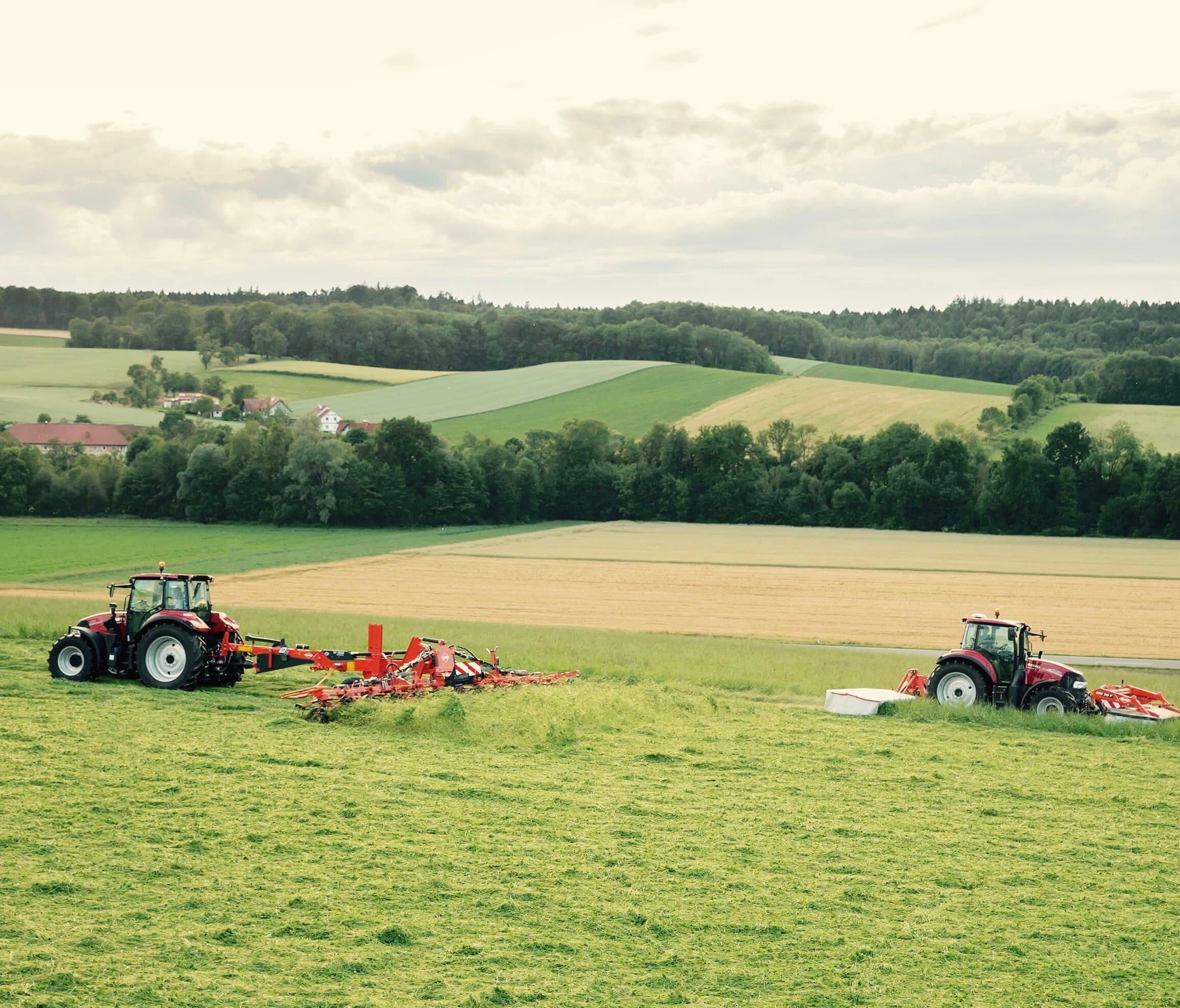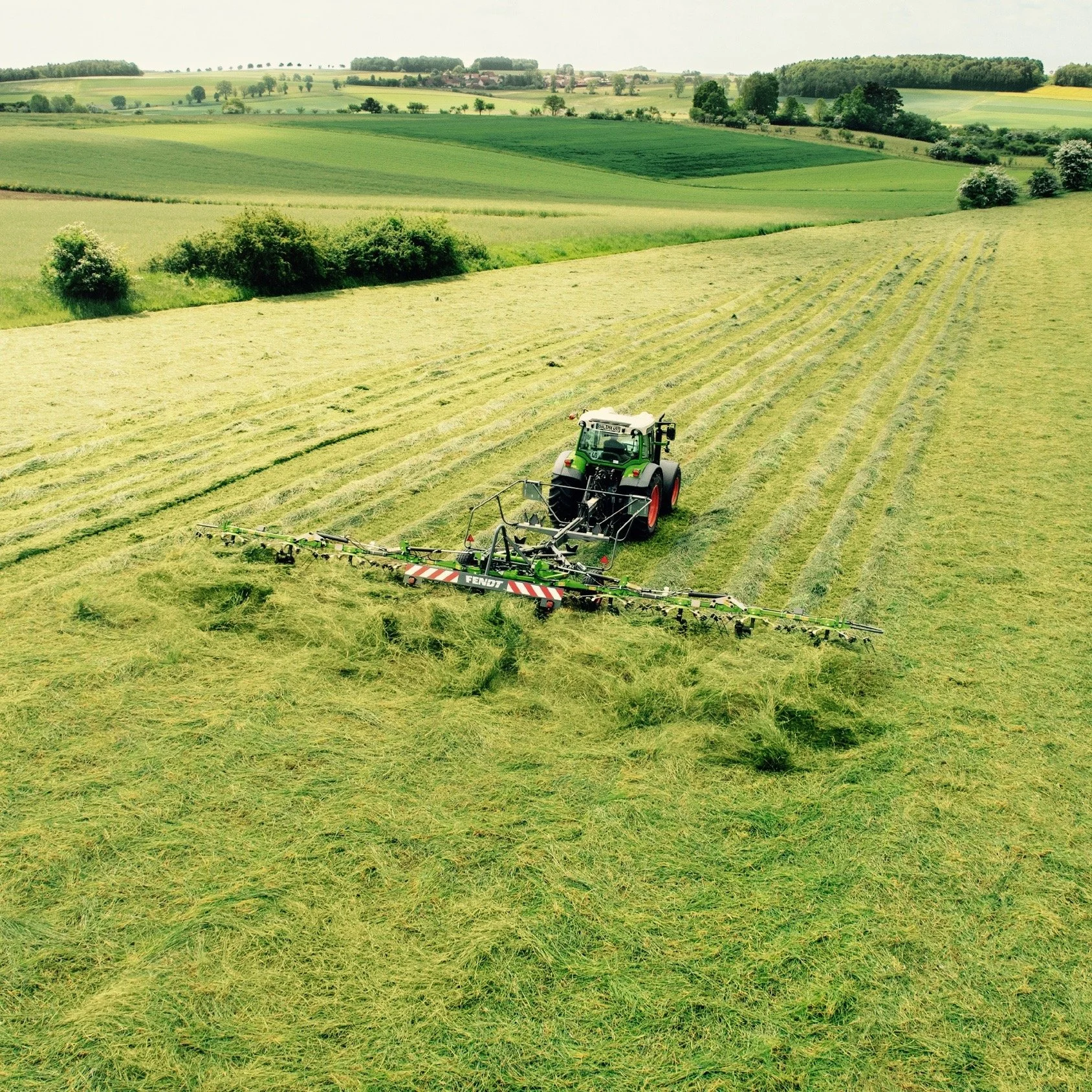How to predict grass silage dry matter
A car crash of theory meeting reality – that’s what this topic is to most people – oh but without the bent metal and insurance claims. So if you’re making silage in the UK you are likely to be (at least) aware of target dry matter percentage. That’s the theory – something like 28-32% dry matter is an oft-quoted target figure.
The reality is using years of experience to juggle mower, tedder and chopper drivers whilst booking the perfect wilting weather and not forgetting to pray to the god of reliability. If the stars all align, come analysis day you might find your silage hits the target dry matter range. If this sounds more like black art than farm management you are probably right – it’s often simply known as experience. So is it possible to put some science to work to assist the experience?
Can you predict dry matter in silage?
Obviously we need to start at the beginning, and that’s the standing crop. Getting an estimate of the standing crop dry matter is vital to working out what we need to do to hit the clamp target DM. We will look at this in some detail in another blog in this series but a simple fresh sample dried in the microwave will be enough to calculate a standing crop dry matter.
So now we have the start line, we can work out how much we need to wilt the crop to hit the clamp dry matter target. What we are trying to do is calculate how long the crop needs to be on the ground before the chopper picks it up.
Traditionally this has been around 24 hrs but is that correct?
This is a question the industry has been trying to answer for some time. Using a forage moisture meter or drying samples in the microwave will give you some real hard figures as will a calibrated harvester mounted NIR system such as HarvestLab. But getting DM data off the harvester is a bit like using a pregnancy detector as a contraceptive aid – it’s a bit late!
Thank goodness some bright spark from Ecosyl UK came up with the idea of some field trials, and the field trials produced some interesting results. The trials were set up to compare the effects of different mowing and tedding out times against leaving grass in the swath. In all cases the grass was cut by the same mower conditioner. The table below gives some values of the dry matter increase per hour to achieve a target of 30% DM
Activity to 30% DM DM increase
Mowing at 10am – Tedding at 11am 4.5 hrs 1.0% per hr
Mowing at 10am – Tedding at 3pm 7.0 hrs 0.6% per hr
Mowing at 3pm – Tedding at 4pm 5.0 hrs 0.9% per hr
Mowing at 3pm – Tedding at 10am 23.0 hrs 0.2%/per hr
Mowing at 3pm – Left in rows n/a n/a
The simple mowing and leaving in the swath didn’t ever reach 30% DM in 24hrs of the trail.
This is some really good information but I’m really nervous to give the results too much value. The problem is that this is just one trial and there are so SO many variables that need to be considered including:
- Crop maturity
- Crop variety
- Agronomy
- Soil type and moisture content
- Wind speed
- Humidity
- Wind speed
- Air temperature
That’s quite a list and much more complex than “was the sun shining?” But let’s not get carried away; the trials can give us a steer in the right direction.
Getting back to reality, we need to make some decisions, and number one should be to match the mower output to the choppers appetite. It is common for the chopper to be catching the mower and that means we get a spread of wilting times. If this varies by a couple of hours that might not be a disaster but without some sort of equality we are inevitably going to get a spread of dry matter and not the target.
To ted or not to ted?
That isn’t really a question because making the best silage will require the tedder to get through the mown crop pretty smartly. Leaving the crop to wilt in the swath will cost you sugars as the crop continues to respire on the ground. In addition all the unwanted microbes begin to get to work making your job of controlling fermentation and aerobic stability a whole lot more complex.
Tedding makes sense and good silage – what we are still struggling with is how long to leave the grass spread out? With the number of variables it’s almost impossible to accurately predict the dry matter increase per hour that the crop is wilting
If you can’t predict then try and forecast
This might be only as accurate as the weather forecast but it’s better than closing your eyes and hoping for the best. Sit down with the contractor (if you’re using one) and make a plan. Agree the target mowing start times, the tedding plan using the figures in the table as a guide. Plan when the rowing up and chopper are going to hit the fields. Make sure you have a plan B for what you are going to do with these timings when the weather doesn’t play ball.
Once you have a plan, you can start to feed back some data. To do this you are going to have the measure the dry matter of the grass. You can get a forage dry matter meter but a microwave and a set of digital scales is more than enough. Take some dry matter readings throughout the process at mowing, during the wilting phase, at rowing up and then the chopped material. If you record this against the time periods for wilting and the weather conditions you will begin to get a set of multiple field trials that are specific to your farm. It’s a bit like years and years of farming experience without the dodgy memory and it’s something someone else can pick up when you don’t want to.
If you want any further information or help predicting the dry matter of your grass silage, or want to discuss any of the other aspects covered in this series – contact Jeremy Nash at jeremy@silageconsultant.co.uk
Follow The Silage Consultant on social media:


